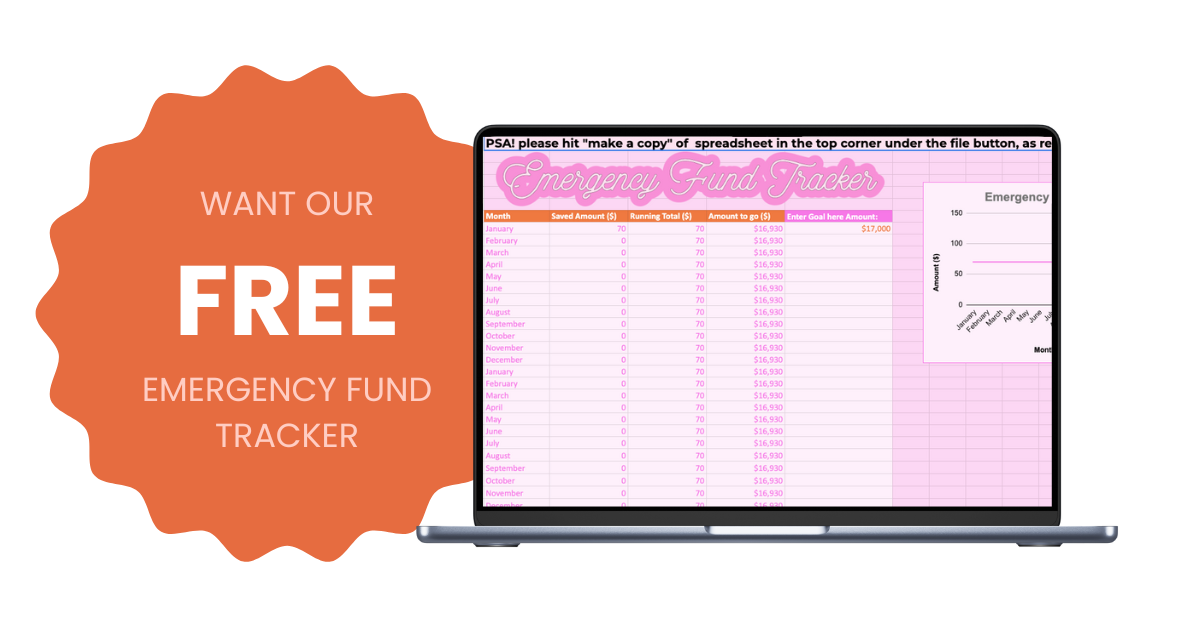Emergency Funds 101: Your Financial Safety Net (That Future You Will Love You For)
Let’s be real. Life throws curveballs. Washing machines break. Vet bills appear out of nowhere. Jobs change. Rent goes up. And when those uh-oh moments hit, your emergency fund is what stops you from spiralling into a panic or reaching for a credit card.
If you’ve ever felt one pay cycle away from chaos, this one’s for you.
💡 So, What Is an Emergency Fund?
It’s a stash of money set aside specifically for unexpected expenses. Think of it as your personal financial safety net. It’s not for holidays, not for sales, and definitely not for bottomless brunch.
This is money that has one job only: to have your back when life doesn't go to plan.
🧮 How Much Should You Have?
The short answer? It depends on you. But here’s a good rule of thumb:
Start with a goal of $1,000–$2,000 if you’re just getting started. That’ll cover most minor emergencies like a car repair or unexpected bill.
Then aim for 3 to 6 months' worth of essential expenses. Think rent or mortgage, groceries, utilities, insurance, transport just the must-haves to keep life moving.
Example time:
If your essential expenses total $3,000 a month, your emergency fund goal would be $9,000 to $18,000. Sound big? Don’t panic we’re getting to the juicy saving tips.
💸 Tips to Build Your Emergency Fund (Without Sacrificing Your Entire Life)
1. Automate it
Set up an automatic transfer to your emergency fund every payday, even if it's just $10 or $20 to start. It adds up faster than you think, and you won’t miss it if it’s already out of your spending account.
2. Treat it like a bill
Just like rent or your phone plan, make your emergency fund a non-negotiable. Future You is relying on it.
3. Use a high-interest savings account (HISA)
Pop your emergency fund in a high-interest savings account so it’s working while it’s waiting. You’ll earn interest, but it’ll still be accessible when you need it. Bonus points if it’s with a separate bank so you're less tempted to dip in.
4. Boost it with side hustles, bonuses or refunds
Tax return coming in? Marketplace sale? Unexpected windfall? Channel it into your emergency fund before the temptation hits.
5. Round up your spending
Some banks let you round up purchases to the nearest dollar and stash the spare change into savings. It’s low-effort, high-reward.
🚫 And One Rule? Don’t Touch It (Unless It’s an Actual Emergency)
We get it life happens. But if you dip into your emergency fund for non-emergencies (hello, concert tickets), it won’t be there when you actually need it.
Need a litmus test? If it’s not unexpected, urgent or essential, it’s probably not an emergency.
The Bottom Line?
Building an emergency fund isn’t just about being “good with money.” It’s about peace of mind. It’s knowing that whatever life throws your way, you’ve got a plan (and a little cash cushion) to handle it.
No panic. No debt. No drama.
Start small, stay consistent, and let your emergency fund be the financial flex it truly is.
***Please remember our blogs aren’t intended as financial advice - they’re intended only as a starting point to give you a little extra info! For more in-depth advice catered to your personal financial position, please see a certified financial advisor.


